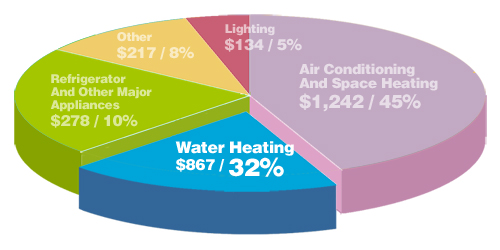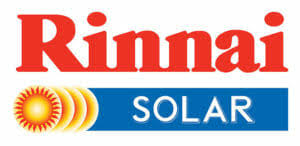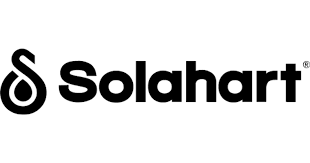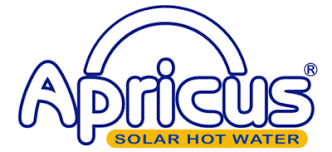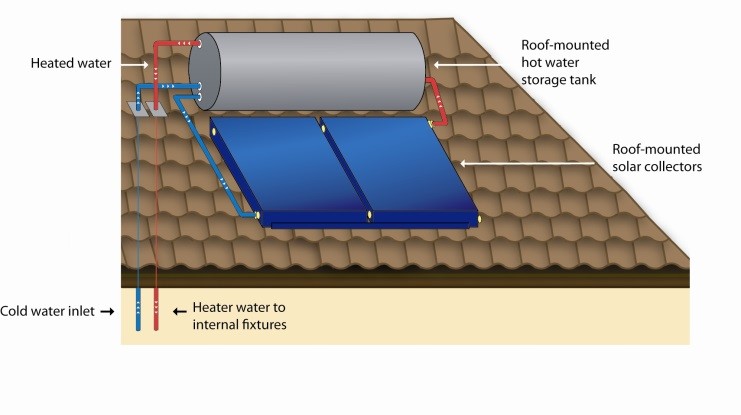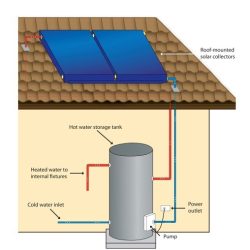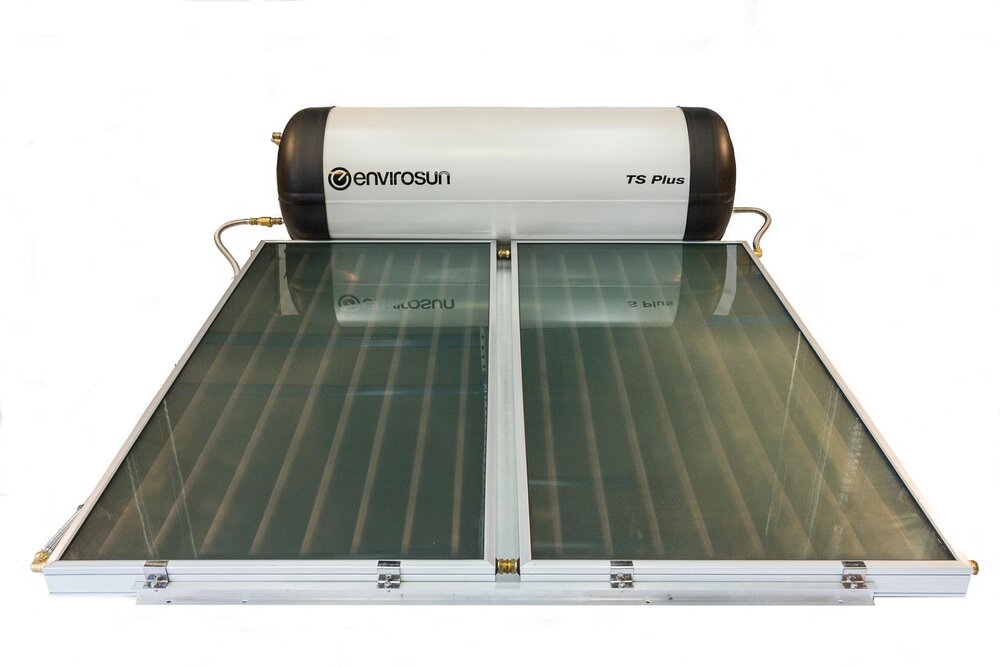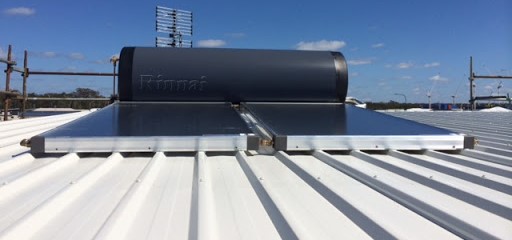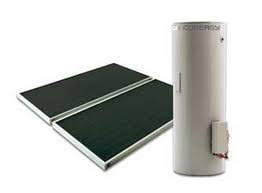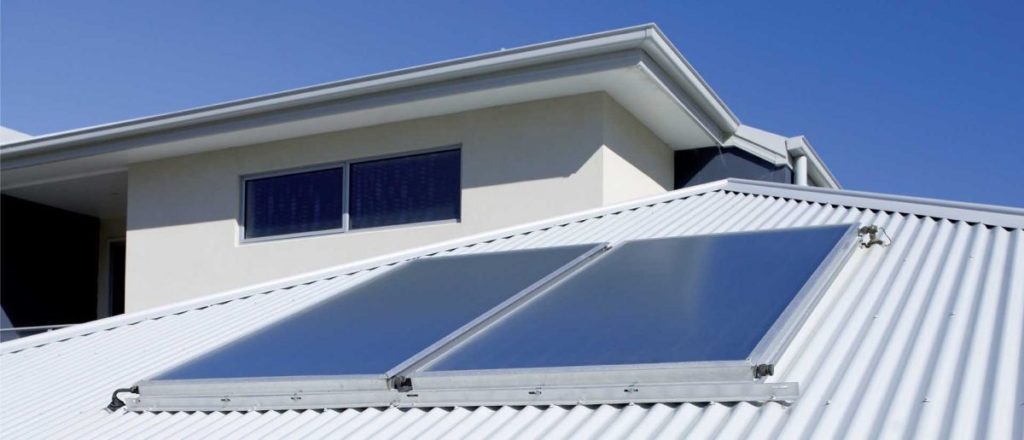Solar Hot Water Heaters
Trust the Bribie Island solar hot water experts.
We install, repair, and replace both roof-mounted and split solar hot water systems—fast, compliant, and built to last.


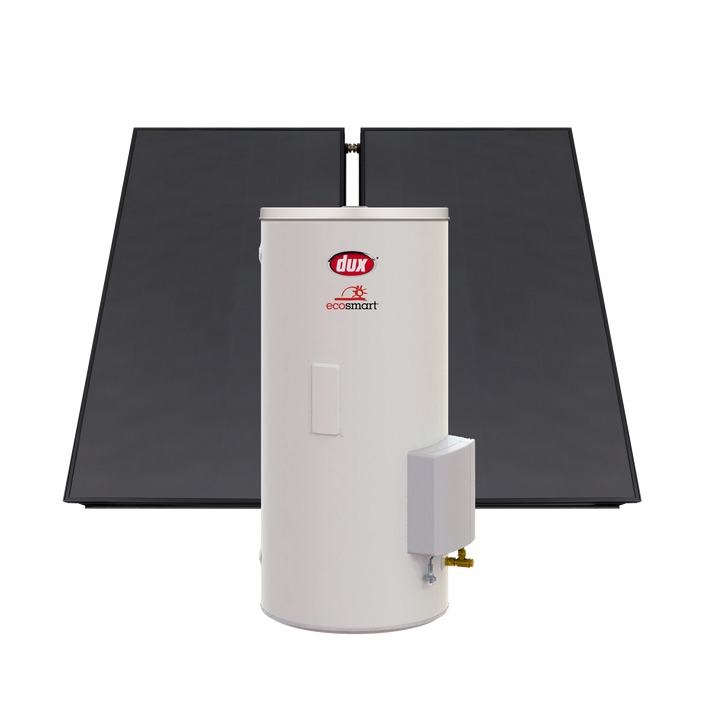
Solar Hot Water systems come in 2 different styles
Solar hot water systems are available in two main styles—roof-mounted and split—with multiple tank sizes and design options to suit different homes, climates, and locations. Beyond the environmental benefits of reducing your energy use, the biggest advantage is the significant savings on your power bills.
Electric hot water heaters work much like a kettle with a heating element, and in Queensland are commonly available in 1.8kW, 2.4kW, and 3.6kW ratings (with the larger 4.8kW elements only used in rare cases due to their high power draw). These element sizes are standard across all major brands including Rheem, Dux, Vulcan, AquaMAX, and Rinnai.
It’s important to note that having a larger or smaller element doesn’t change the efficiency rating. For example, a 1.8kW element uses half the power of a 3.6kW element, but it will take twice as long to heat the same amount of water to the same temperature.
Modern electric hot water systems are built with either:
Mild steel tanks lined with vitreous enamel and protected by a sacrificial anode, or
Stainless steel tanks for enhanced durability.
The old copper-style water heaters are no longer produced.
Need Solar Hot Water Installed Fast? We Can Help!
Roof mounted, Thermosyphon solar water heaters.
Roof-Mounted Solar Hot Water Systems
This is the traditional style of solar hot water system, where both the tank and solar collectors are installed on the roof. These systems have been used in Australia for many years and remain an effective way to heat water.
How They Work
The design uses simple thermosyphon physics:
Cooler water sinks to the lowest point in the tank and flows into the solar panels.
As the water heats in the panels, it rises and moves back up into the storage tank.
This natural circulation continues, keeping the tank supplied with hot water.
Modern Improvements
Older systems often released excess water through the pressure and temperature relief valve when the system overheated. Today, new thermosyphon models include a flow control valve that restricts circulation once water reaches 60°C.
This prevents unnecessary water loss, but it also means the system may not store as much hot water as before.
These systems can sometimes produce a rumbling noise when taps are opened on very hot days, caused by superheated water moving through the panels when pressure drops.
Tank & Collector Options
Collectors come in different sizes depending on the brand, providing varying levels of solar gain.
Evacuated tube collectors are not recommended in Queensland, as they provide too much solar gain and risk boiling water away during most of the day. They are more suitable for cooler regions further from the equator.
Storage tanks are available in both stainless steel and vitreous enamel lined mild steel.
Considerations
The main drawback of roof-mounted systems is their appearance and weight:
A full storage tank can weigh over 500kg, placing a significant load on the roof.
Many homeowners also find them less visually appealing due to the large tank being visible.
Call Bribie Island Hot Water on 1300 218 122 for straightforward advice on which solar hot water system will work best for your home.
Ground Mounted, Split system solar hot water heaters
A split solar hot water system has the storage tank on the ground, with only the solar collectors mounted on the roof. Collectors can be flat solar panels or evacuated tubes—but once again, evacuated tubes are not recommended for Queensland’s climate, as they tend to overheat, boil away water, and create unnecessary rumbling noises.
How They Work
Storage tanks generally come in 250L, 315L, and 400L sizes.
A sensor at the panels and tank monitors temperature differences.
When the panels are at least 10°C hotter than the tank water, a small circulation pump (usually 25W or less) activates, moving water at about 2–3 litres per minute through the collectors.
This transfers heat from the panels back into the tank, where natural convection allows the hottest water to rise to the top.
The pumps are quiet and consume very little electricity—in fact, most use less power in a day than your microwave clock.
Build & Installation
Copper flow and return pipes should always be used to handle high temperatures.
At Bribie Island Hot Water, we install these pipes in one continuous run with no joints or fittings in the roof cavity, and cover them with 25mm high-temperature, UV-rated insulation to minimise heat loss.
Performance
Panel temperatures can climb as high as 120°C, and some systems allow storage tanks to reach up to 75°C.
Once the tank reaches its set temperature, water remains in the panels until usage drops the level enough to restart circulation.
Why Quality Matters
Choosing a reputable brand is critical. Many cheap imports with poor components have caused major issues and unexpected costs for homeowners. The price difference between a reliable system and a poor one is small compared to the long-term benefits and peace of mind.
Contact Bribie Island Hot Water on 1300 728 122 for clear, unbiased advice on choosing the right solar system for your home.
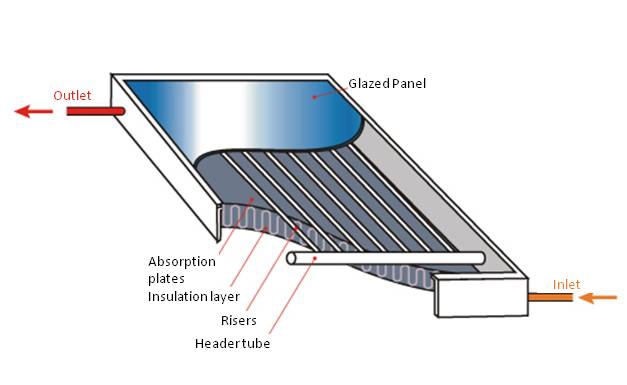
Flat Panel solar collector
By far the most common type of solar hot water panel in Australia, flat plate collectors are suitable for use in almost any climate or location.
How They Work
Inside each panel is a copper manifold with flat plates powder-coated black to maximise heat absorption.
As water flows through the copper pipes, heat is transferred either by:
Thermosyphon circulation (in roof-mounted systems, using natural rise and fall of hot and cold water), or
A circulation pump (in split systems, with the tank on the ground).
The collectors are covered by toughened glass and a full insulated frame, trapping heat and ensuring long-lasting performance.
Efficiency
These panels can generate heat even without direct sunlight.
On an overcast day, they can still reach up to twice the ambient temperature—for example, if the air temperature is 26°C, the panels can heat water to around 52°C.
Installation
The number of panels depends on your tank size.
Most systems require two to three panels to match the capacity of common storage tanks.
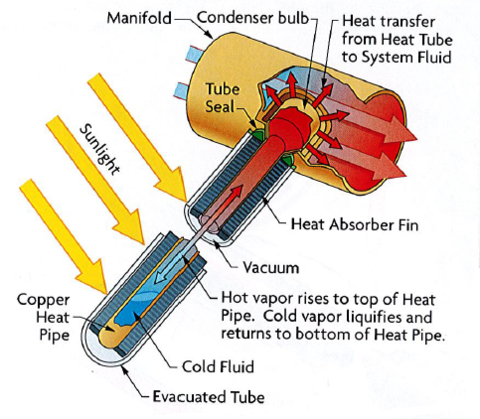
Evacuated Tube solar collectors
Evacuated tube systems use a series of glass tubes, each containing a copper rod filled with a heat-transfer fluid. These tubes slot into a manifold at the top of the collector, where heat is absorbed and transferred to the storage tank.
System Design
Available in configurations of 12, 18, 24, or 32 tubes, depending on tank size and installation requirements.
Extremely efficient—tubes can reach temperatures of up to 250°C around the glass surface in full sun.
Suitability
Designed primarily for European-style climates, where sunlight is weaker and angles are lower.
They work well in cooler regions of Australia such as southern NSW, Victoria, South Australia, and southern WA.
In Queensland, however, they are generally too efficient, often leading to overheating, excess water loss, and rumbling noises from boiling water in the tubes.
Considerations
Few suppliers still stock evacuated tube systems in Australia.
They are typically around $1,000 more expensive than flat plate panels, without offering significant benefits in Queensland’s climate.
For most Bribie Island homes, we do not recommend evacuated tubes, as flat plate systems deliver better value and performance in local conditions.
Contact Bribie Island Hot Water on 1300 728 122 for expert, unbiased, fact-based advice from a local team with 20+ years serving South East Queensland.
You can even talk to us on weekends and after hours on 0413 861 166
At Bribie Island Hot Water, we keep a wide range of solar hot water systems in stock, ready for fast installation. By stocking the main products we sell, there’s no waiting around for deliveries—your new hot water system can be installed quickly with no delays.
We also offer Easy Payment Plans to make the upfront cost easier to manage. With terms from 1 to 3 years and fortnightly repayments after a small deposit, your repayments can be close to what you’re already saving on your electricity bills.
Bribie Island Hot Water supplies and installs solar hot water systems across all of Bribie Island—fast, compliant, and built to last.

